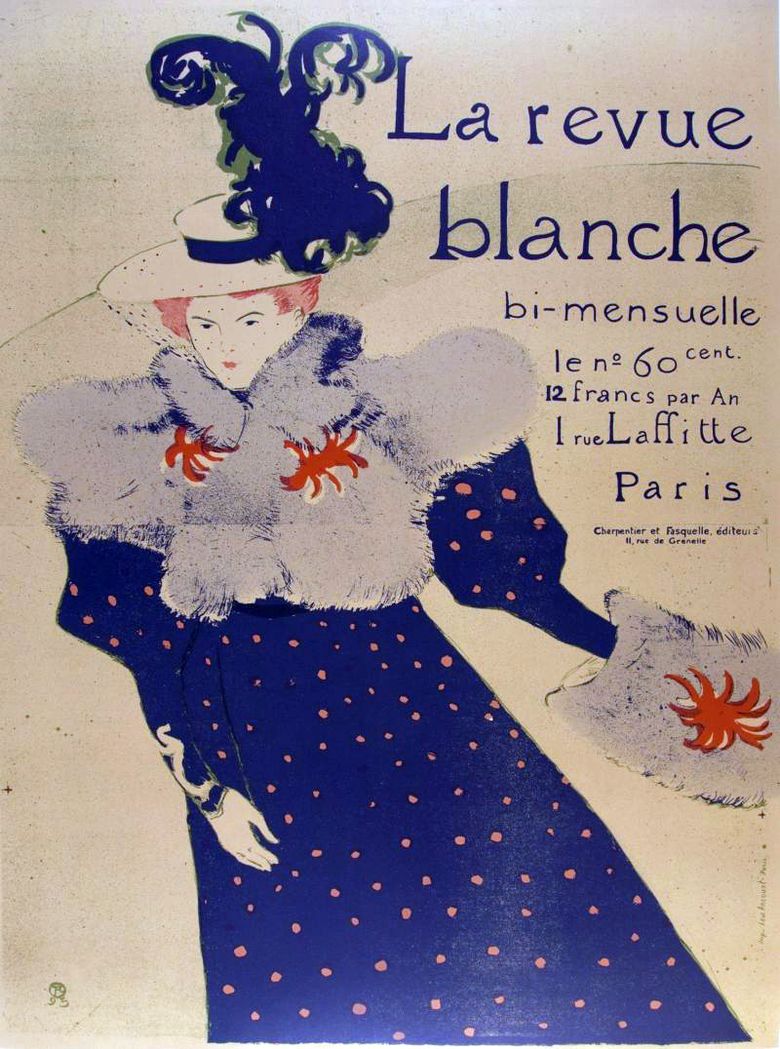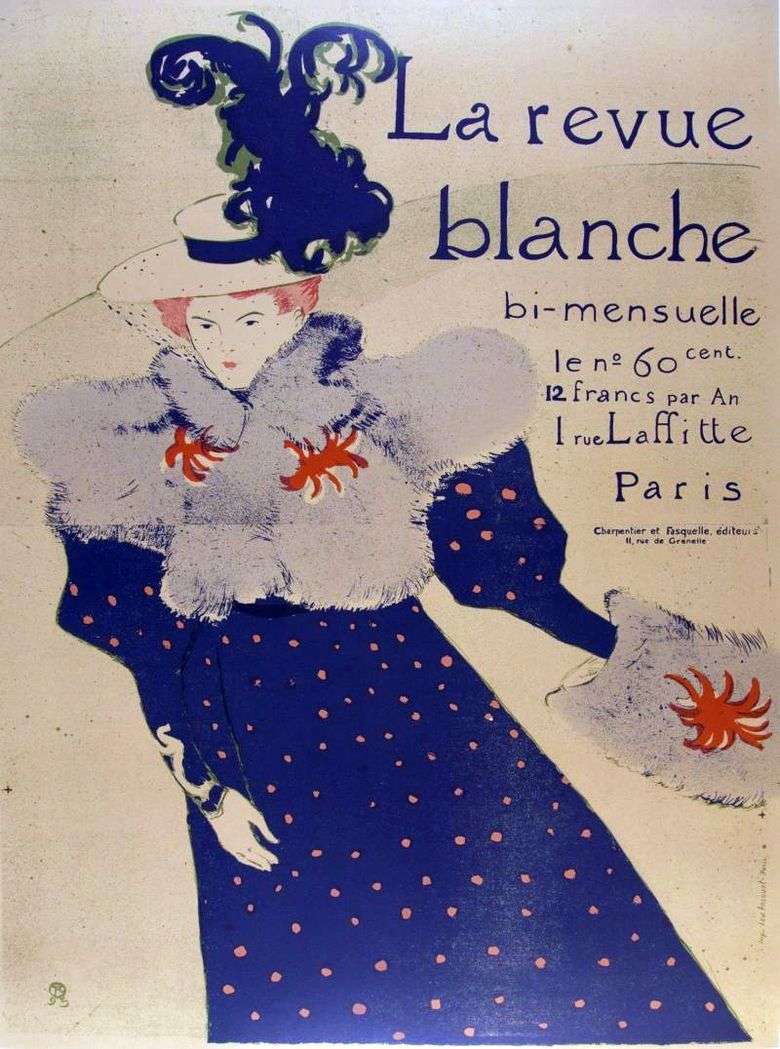
Museum of Toulouse-Lautrec, Albi, France. Lautrec could not stand talks on political topics, but revolved around the world of artists, actors and writers, most of whom did not hide their anarchist beliefs. They were in vogue then. Leading people defended them, snobs boasted of them. In that year, Lautrec became acquainted with a group of free-thinking writers who, in varying degrees, were attached to anarchists in their views-with the staff of the Revue Blanche, a journal founded by the brothers Nathanson two years ago.
Lautrec immediately felt himself in this environment freely. Alexander and Tade Natanson, Poles by descent, managed to gain prestige in the Parisian theater and literary world. The Nathansons were people with a broad nature and did not stint on ideas or money, instinctively pursued innovators, almost always unerringly detected all the phenomena characteristic of that era of the end of the century, were supporters of Mallarme, Ibsen, young artists such as Bonnard, Vuillard, Roussel, Maurice Denis, Vallotton, who called themselves “Nabis.” In the February issue of the Revue Blanche, a laudatory article was published about the Lautrec exhibition in the gallery “Busso and Valadon”.
Of the brothers, Nathanson was particularly distinguished Tade. A tall, strong man, a gourmet and a glutton, he ordered himself a huge number of dishes, was generous, loved to litter with money, which was quite consistent with his living and addicting nature. Very approached to him and his nickname “Magnificent.” The indefatigable businessman was combined in him with a refined esthete, the discerning mind did not prevent him from indulging in dreams and utopian projects. It was a personality thin and impulsive, deep and at the same time light-minded. Despite some childishness, he felt a talent, but the talent unchecked.
This giant often wove in the clouds, his fervent imagination and intuition triumphed over the intellect. He married a very young woman – she was only fifteen years old on the day of the wedding, and three months, – to an amazingly beautiful girl. It was about such a wife he dreamed all his life! Her name was Mizia. Among her ancestors were a Russian prince and a gifted musician-Belgian. She herself was a virtuoso pianist. Mizia allowed herself all sorts of whims, no less than Lautrec, but, unlike him, she lived in some fantastic world and subordinated everything to her whims. Preparing for the wedding, she spent on clothes, on “fairy dowry,” three hundred thousand gold francs – all the money that her parents gave her.
The Nathansons and their friends very soon accepted Lautrec in their circle and fell in love with him. He began to be published in the “Revue Blanche.” After a while, he asked Mizia to pose for him for the cover of the pamphlet with the song Dio “Chastity”.
Misia Natanson also served Lautrec as a model for one of the posters ordered by the Revue Blanche. On it, the artist painted the “sparkling and mysterious” Misia in a fur bolero, with a muff, veil and in a big hat decorated with black feathers.
Misia Natanson was surprisingly good, but the artist distorted the features of her face. “Lautrec, why do you portray all women as ugly?” Mizia asked. “Because they are really ugly,” Lautrec said.
 Révolution Blanche – Henri de Toulouse-Lautrec
Révolution Blanche – Henri de Toulouse-Lautrec Revisión Blanche – Henri de Toulouse-Lautrec
Revisión Blanche – Henri de Toulouse-Lautrec Mademoiselle Dio for the piano by Henri de Toulouse-Lautrec
Mademoiselle Dio for the piano by Henri de Toulouse-Lautrec The artist’s mother, Countess Adele de Toulouse-Lautrec at breakfast by Henri de Toulouse-Lautrec
The artist’s mother, Countess Adele de Toulouse-Lautrec at breakfast by Henri de Toulouse-Lautrec Maurice Jouayan by Henri de Toulouse-Lautrec
Maurice Jouayan by Henri de Toulouse-Lautrec Count Alfonso de Toulouse-Lautrec governs a team of four horses by Henri de Toulouse-Lautrec
Count Alfonso de Toulouse-Lautrec governs a team of four horses by Henri de Toulouse-Lautrec Tapier de Suleirão by Henri de Toulouse-Lautrec
Tapier de Suleirão by Henri de Toulouse-Lautrec Portrait of Vincent Van Gogh by Henri de Toulouse-Lautrec
Portrait of Vincent Van Gogh by Henri de Toulouse-Lautrec